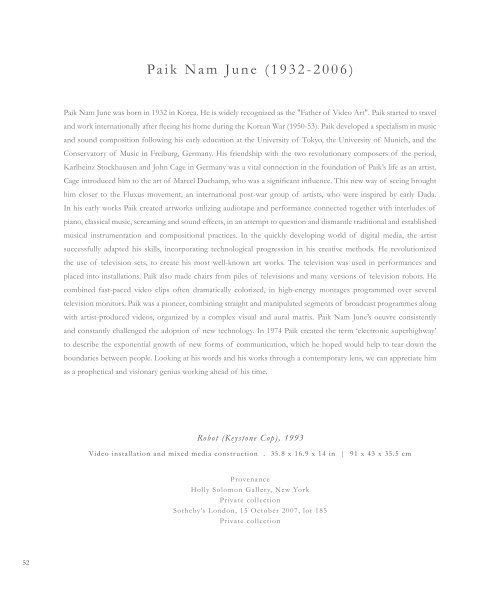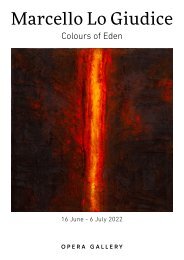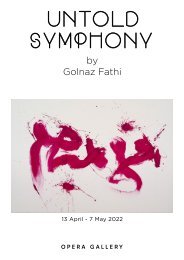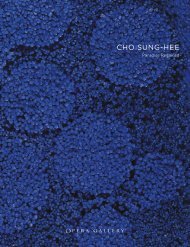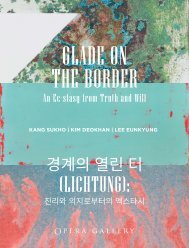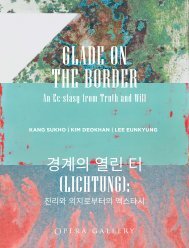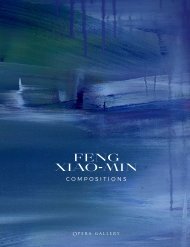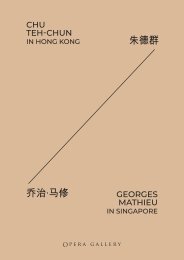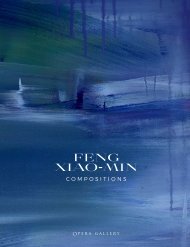Made in Asia Catalogue
Create successful ePaper yourself
Turn your PDF publications into a flip-book with our unique Google optimized e-Paper software.
Paik Nam June (1932-2006)<br />
Paik Nam June was born <strong>in</strong> 1932 <strong>in</strong> Korea. He is widely recognized as the "Father of Video Art". Paik started to travel<br />
and work <strong>in</strong>ternationally after flee<strong>in</strong>g his home dur<strong>in</strong>g the Korean War (1950-53). Paik developed a specialism <strong>in</strong> music<br />
and sound composition follow<strong>in</strong>g his early education at the University of Tokyo, the University of Munich, and the<br />
Conservatory of Music <strong>in</strong> Freiburg, Germany. His friendship with the two revolutionary composers of the period,<br />
Karlhe<strong>in</strong>z Stockhausen and John Cage <strong>in</strong> Germany was a vital connection <strong>in</strong> the foundation of Paik’s life as an artist.<br />
Cage <strong>in</strong>troduced him to the art of Marcel Duchamp, who was a significant <strong>in</strong>fluence. This new way of see<strong>in</strong>g brought<br />
him closer to the Fluxus movement, an <strong>in</strong>ternational post-war group of artists, who were <strong>in</strong>spired by early Dada.<br />
In his early works Paik created artworks utiliz<strong>in</strong>g audiotape and performance connected together with <strong>in</strong>terludes of<br />
piano, classical music, scream<strong>in</strong>g and sound effects, <strong>in</strong> an attempt to question and dismantle traditional and established<br />
musical <strong>in</strong>strumentation and compositional practices. In the quickly develop<strong>in</strong>g world of digital media, the artist<br />
successfully adapted his skills, <strong>in</strong>corporat<strong>in</strong>g technological progression <strong>in</strong> his creative methods. He revolutionized<br />
the use of television sets, to create his most well-known art works. The television was used <strong>in</strong> performances and<br />
placed <strong>in</strong>to <strong>in</strong>stallations. Paik also made chairs from piles of televisions and many versions of television robots. He<br />
comb<strong>in</strong>ed fast-paced video clips often dramatically colorized, <strong>in</strong> high-energy montages programmed over several<br />
television monitors. Paik was a pioneer, comb<strong>in</strong><strong>in</strong>g straight and manipulated segments of broadcast programmes along<br />
with artist-produced videos, organized by a complex visual and aural matrix. Paik Nam June’s oeuvre consistently<br />
and constantly challenged the adoption of new technology. In 1974 Paik created the term ‘electronic superhighway’<br />
to describe the exponential growth of new forms of communication, which he hoped would help to tear down the<br />
boundaries between people. Look<strong>in</strong>g at his words and his works through a contemporary lens, we can appreciate him<br />
as a prophetical and visionary genius work<strong>in</strong>g ahead of his time.<br />
Robot (Keystone Cop), 1993<br />
Video <strong>in</strong>stallation and mixed media construction . 35.8 x 16.9 x 14 <strong>in</strong> | 91 x 43 x 35.5 cm<br />
Provenance<br />
Holly Solomon Gallery, New York<br />
Private collection<br />
Sotheby’s London, 15 October 2007, lot 185<br />
Private collection<br />
52


